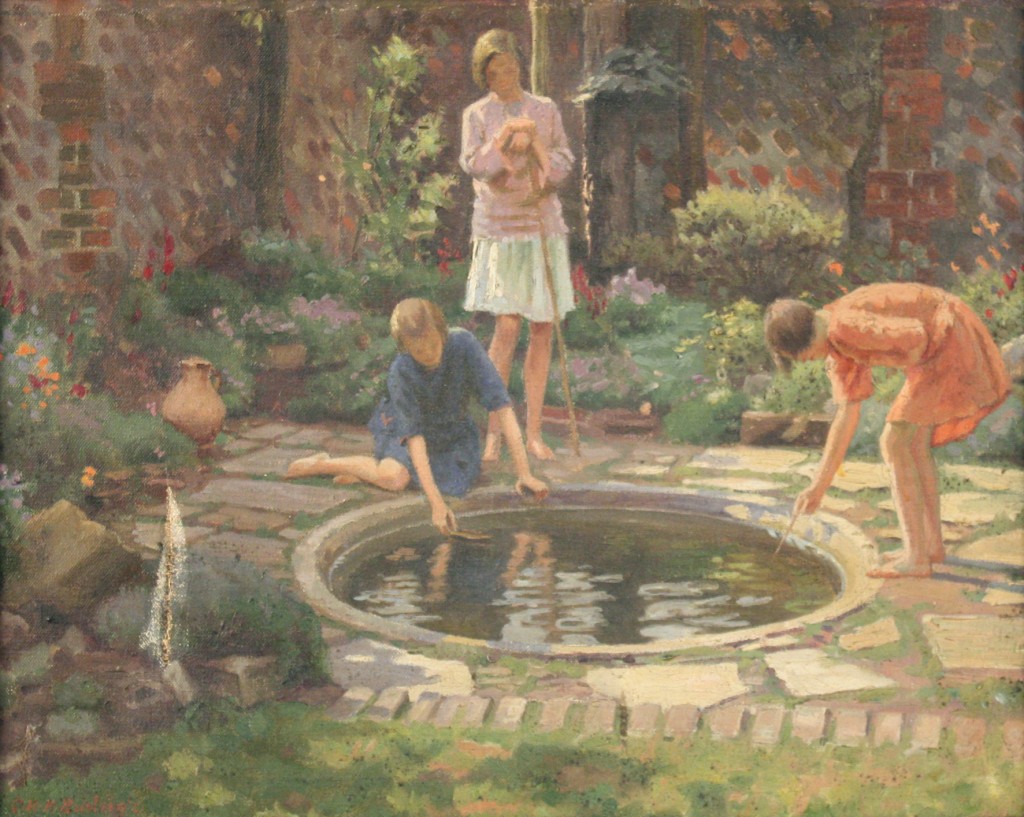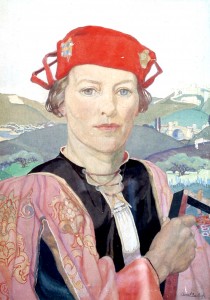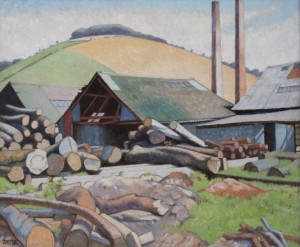
It was my pleasure and privilege to meet the Sussex artist Veronica Burleigh some sixteen years ago through my friend, the artist Harry Shaw. At that time Veronica was living in the poetic village of Blackstone, near Henfield. Her brick cottage was furnished with Georgian vernacular furniture, which lent a soft charm to this gentle home. The walls were hung with paintings by herself, her father, Charles, and her mother, Averil. At the bottom of the garden was her studio, where work from this trio of family artists vied for space and attention. By the time I met Veronica, her eyesight was sadly already failing, but she still took a keen interest in the world around her.

The Burleighs became a celebrated family of artists. They lived and worked for most of their lives in the Brighton and Hove area of Sussex. Their artistic styles represent many of those prevalent during the early years of the 20th century. Each studied at the Brighton School of Art and it was here that Charles met Averil. They were married in 1905 and had Veronica in 1909. In 1926 Veronica graduated from Brighton to the Slade School of Art and the Royal Academy.
Charles Burleigh’s work has an academic quality. Take, for example, this charming scene titled ‘The Pond’. Here three girls are absorbed in fishing, framed by the summer border of flowers in a walled garden. The Burleighs were a close family and Charles often painted his daughter, so perhaps one of these girls is Veronica.

Averil’s work differed from her husband’s. She perfected a graphic style, which was both imaginative and decorative. From the 1920s her work became predominantly figurative, with a stylistic simplification and restraint. Evoking the art of the early Renaissance, she employed the medium of egg tempera, an ancient method whereby a colour pigment is mixed with egg yolk, rather than oil. The striking study ‘Troubadour’ illustrates Averil’s precise, graphic style and the influence of Renaissance art in the painting’s composition and landscape.
Veronica’s work also reflects a talent for precise draughtsmanship and colour. Take the oil painting ‘Sawmill under Goodwood’. Here the stylized composition of logs draws the eye to the dramatic red beams of the mill shed and beyond to the downland crest with its crown of trees.
In 1952, three years after Averil’s death, Hove Museum & Art Gallery held an exhibition of pictures by all three artists and commentators were quick to remark on the common threads in their work.
At auction, paintings by these artists range between £50 and £1200. Examples of their work can be seen at Brighton and Hove Museums, Worthing Museum & Art Gallery and in other city art galleries across the country.
By Revd. Rupert Toovey. Originally published on 29th October 2014 in the West Sussex Gazette.